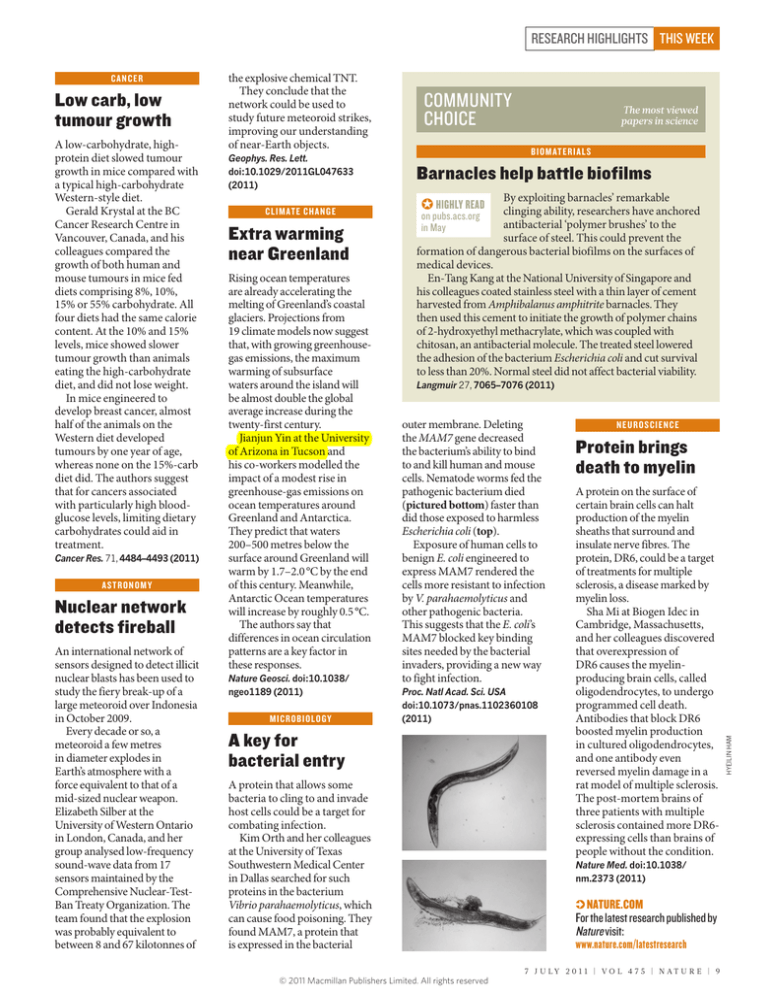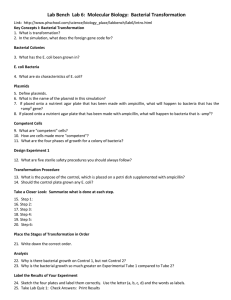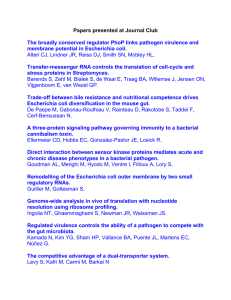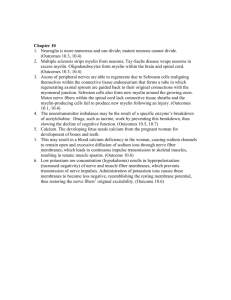
RESEARCH HIGHLIGHTS THIS WEEK
Low carb, low
tumour growth
A low-carbohydrate, highprotein diet slowed tumour
growth in mice compared with
a typical high-carbohydrate
Western-style diet.
Gerald Krystal at the BC
Cancer Research Centre in
Vancouver, Canada, and his
colleagues compared the
growth of both human and
mouse tumours in mice fed
diets comprising 8%, 10%,
15% or 55% carbohydrate. All
four diets had the same calorie
content. At the 10% and 15%
levels, mice showed slower
tumour growth than animals
eating the high-carbohydrate
diet, and did not lose weight.
In mice engineered to
develop breast cancer, almost
half of the animals on the
Western diet developed
tumours by one year of age,
whereas none on the 15%-carb
diet did. The authors suggest
that for cancers associated
with particularly high bloodglucose levels, limiting dietary
carbohydrates could aid in
treatment.
Cancer Res. 71, 4484–4493 (2011)
ASTRO NO MY
Nuclear network
detects fireball
An international network of
sensors designed to detect illicit
nuclear blasts has been used to
study the fiery break-up of a
large meteoroid over Indonesia
in October 2009.
Every decade or so, a
meteoroid a few metres
in diameter explodes in
Earth’s atmosphere with a
force equivalent to that of a
mid-sized nuclear weapon.
Elizabeth Silber at the
University of Western Ontario
in London, Canada, and her
group analysed low-frequency
sound-wave data from 17
sensors maintained by the
Comprehensive Nuclear-TestBan Treaty Organization. The
team found that the explosion
was probably equivalent to
between 8 and 67 kilotonnes of
the explosive chemical TNT.
They conclude that the
network could be used to
study future meteoroid strikes,
improving our understanding
of near-Earth objects.
Geophys. Res. Lett.
doi:10.1029/2011GL047633
(2011)
C L I M ATE C H A N G E
Extra warming
near Greenland
Rising ocean temperatures
are already accelerating the
melting of Greenland’s coastal
glaciers. Projections from
19 climate models now suggest
that, with growing greenhousegas emissions, the maximum
warming of subsurface
waters around the island will
be almost double the global
average increase during the
twenty-first century.
Jianjun Yin at the University
of Arizona in Tucson and
his co-workers modelled the
impact of a modest rise in
greenhouse-gas emissions on
ocean temperatures around
Greenland and Antarctica.
They predict that waters
200–500 metres below the
surface around Greenland will
warm by 1.7–2.0 °C by the end
of this century. Meanwhile,
Antarctic Ocean temperatures
will increase by roughly 0.5 °C.
The authors say that
differences in ocean circulation
patterns are a key factor in
these responses.
Nature Geosci. doi:10.1038/
ngeo1189 (2011)
M I C R O BI O LO GY
COMMUNITY
CHOICE
The most viewed
papers in science
B I OM AT E R I A L S
Barnacles help battle biofilms
By exploiting barnacles’ remarkable
clinging ability, researchers have anchored
on pubs.acs.org
antibacterial ‘polymer brushes’ to the
in May
surface of steel. This could prevent the
formation of dangerous bacterial biofilms on the surfaces of
medical devices.
En-Tang Kang at the National University of Singapore and
his colleagues coated stainless steel with a thin layer of cement
harvested from Amphibalanus amphitrite barnacles. They
then used this cement to initiate the growth of polymer chains
of 2-hydroxyethyl methacrylate, which was coupled with
chitosan, an antibacterial molecule. The treated steel lowered
the adhesion of the bacterium Escherichia coli and cut survival
to less than 20%. Normal steel did not affect bacterial viability.
✪ HIGHLY READ
Langmuir 27, 7065–7076 (2011)
outer membrane. Deleting
the MAM7 gene decreased
the bacterium’s ability to bind
to and kill human and mouse
cells. Nematode worms fed the
pathogenic bacterium died
(pictured bottom) faster than
did those exposed to harmless
Escherichia coli (top).
Exposure of human cells to
benign E. coli engineered to
express MAM7 rendered the
cells more resistant to infection
by V. parahaemolyticus and
other pathogenic bacteria.
This suggests that the E. coli’s
MAM7 blocked key binding
sites needed by the bacterial
invaders, providing a new way
to fight infection.
Proc. Natl Acad. Sci. USA
doi:10.1073/pnas.1102360108
(2011)
A key for
bacterial entry
A protein that allows some
bacteria to cling to and invade
host cells could be a target for
combating infection.
Kim Orth and her colleagues
at the University of Texas
Southwestern Medical Center
in Dallas searched for such
proteins in the bacterium
Vibrio parahaemolyticus, which
can cause food poisoning. They
found MAM7, a protein that
is expressed in the bacterial
© 2011 Macmillan Publishers Limited. All rights reserved
NE U R OS CI ENCE
Protein brings
death to myelin
A protein on the surface of
certain brain cells can halt
production of the myelin
sheaths that surround and
insulate nerve fibres. The
protein, DR6, could be a target
of treatments for multiple
sclerosis, a disease marked by
myelin loss.
Sha Mi at Biogen Idec in
Cambridge, Massachusetts,
and her colleagues discovered
that overexpression of
DR6 causes the myelinproducing brain cells, called
oligodendrocytes, to undergo
programmed cell death.
Antibodies that block DR6
boosted myelin production
in cultured oligodendrocytes,
and one antibody even
reversed myelin damage in a
rat model of multiple sclerosis.
The post-mortem brains of
three patients with multiple
sclerosis contained more DR6expressing cells than brains of
people without the condition.
Nature Med. doi:10.1038/
nm.2373 (2011)
NATURE.COM
For the latest research published by
Nature visit:
www.nature.com/latestresearch
7 J U LY 2 0 1 1 | V O L 4 7 5 | N AT U R E | 9
HYEILIN HAM
CANCER







